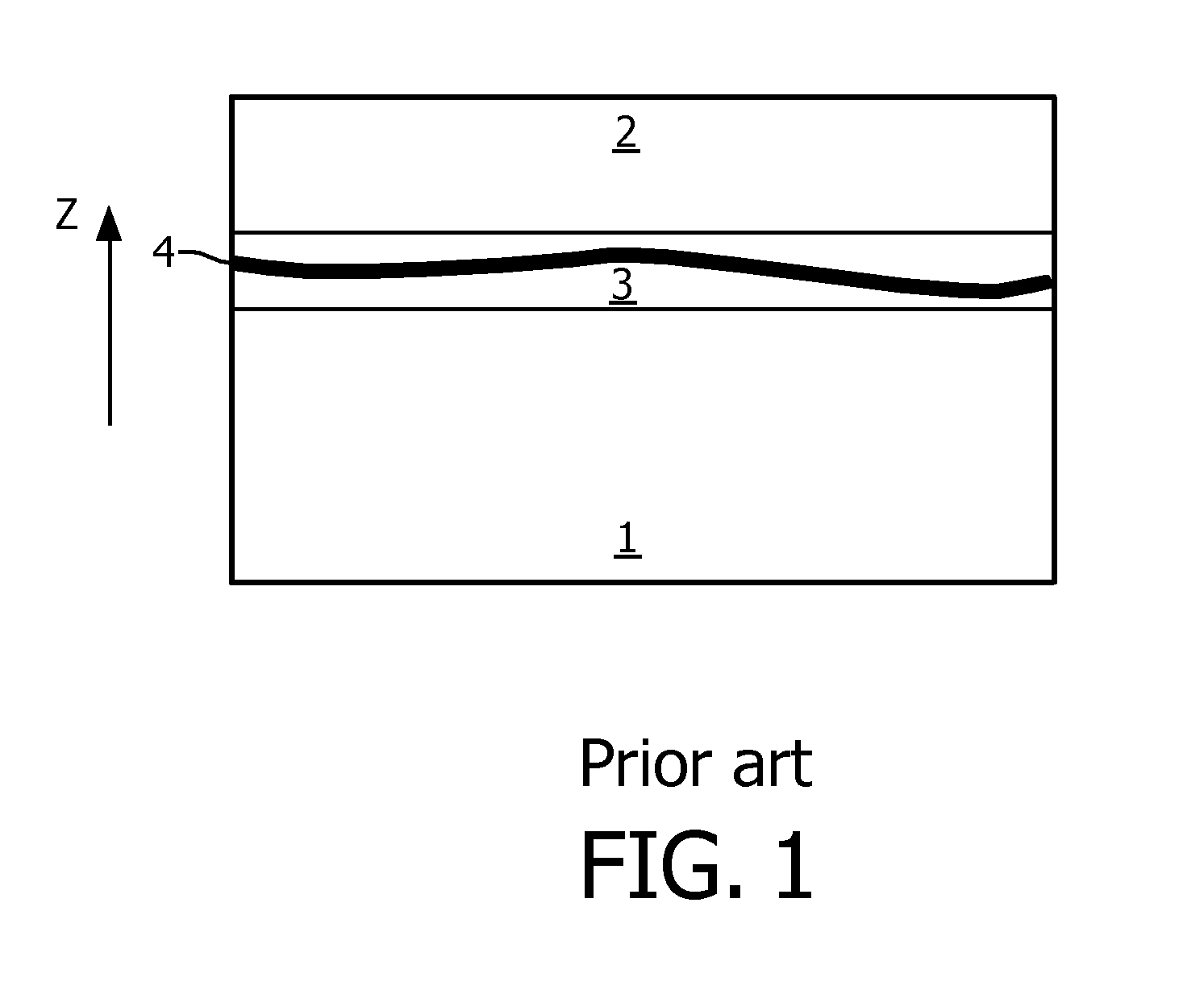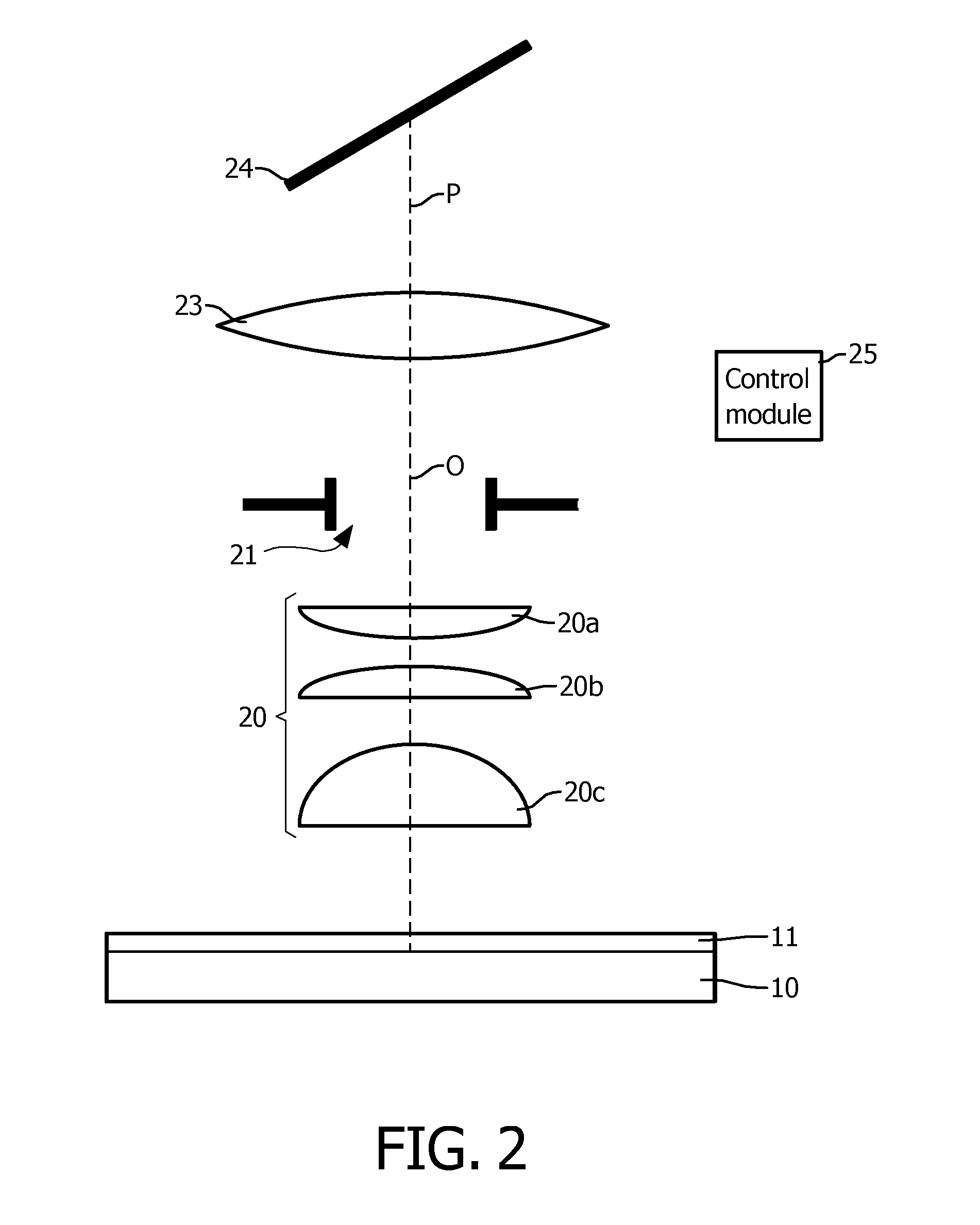Sensor for microscopy
a microscopy and sensor technology, applied in the field of digital scanning microscopes, can solve the problems of limiting the overall throughput time of the scanner, requiring the use of complex and cumbersome mechanical components, and complex and cumbersome actuators for adjusting the focus position of the objective, and achieve the effect of efficient change of focus depth
- Summary
- Abstract
- Description
- Claims
- Application Information
AI Technical Summary
Benefits of technology
Problems solved by technology
Method used
Image
Examples
Embodiment Construction
[0036]A scanning microscope according to an embodiment of the invention is illustrated in FIG. 2.
[0037]This scanner is arranged for imaging a sample (e.g. a tissue layer not shown) which can be placed between a glass slide 10 and a cover slip 11.
[0038]Such a microscope slide is placed on a holding surface of a sample holder not shown in the figure.
[0039]As may be known in the art, along an imaging path P and starting from the microscope slide, the scanner may notably comprise a microscope objective 20, typically made of a plurality of lenses 20a, b, and c, an aperture 21 for blocking un-scattered reflected light from the tissue sample, a tube lens 23 and a sensor 24.
[0040]The sensor 24 comprises a 2D array of pixels, also referred herein as matrix of pixels. This sensor is typically a CMOS imaging sensor.
[0041]As can be seen from FIG. 2, the matrix of pixels is tilted with respect to the optical axis O of the microscope objective lens.
[0042]The scanner further comprises a control mo...
PUM
 Login to View More
Login to View More Abstract
Description
Claims
Application Information
 Login to View More
Login to View More - R&D
- Intellectual Property
- Life Sciences
- Materials
- Tech Scout
- Unparalleled Data Quality
- Higher Quality Content
- 60% Fewer Hallucinations
Browse by: Latest US Patents, China's latest patents, Technical Efficacy Thesaurus, Application Domain, Technology Topic, Popular Technical Reports.
© 2025 PatSnap. All rights reserved.Legal|Privacy policy|Modern Slavery Act Transparency Statement|Sitemap|About US| Contact US: help@patsnap.com



